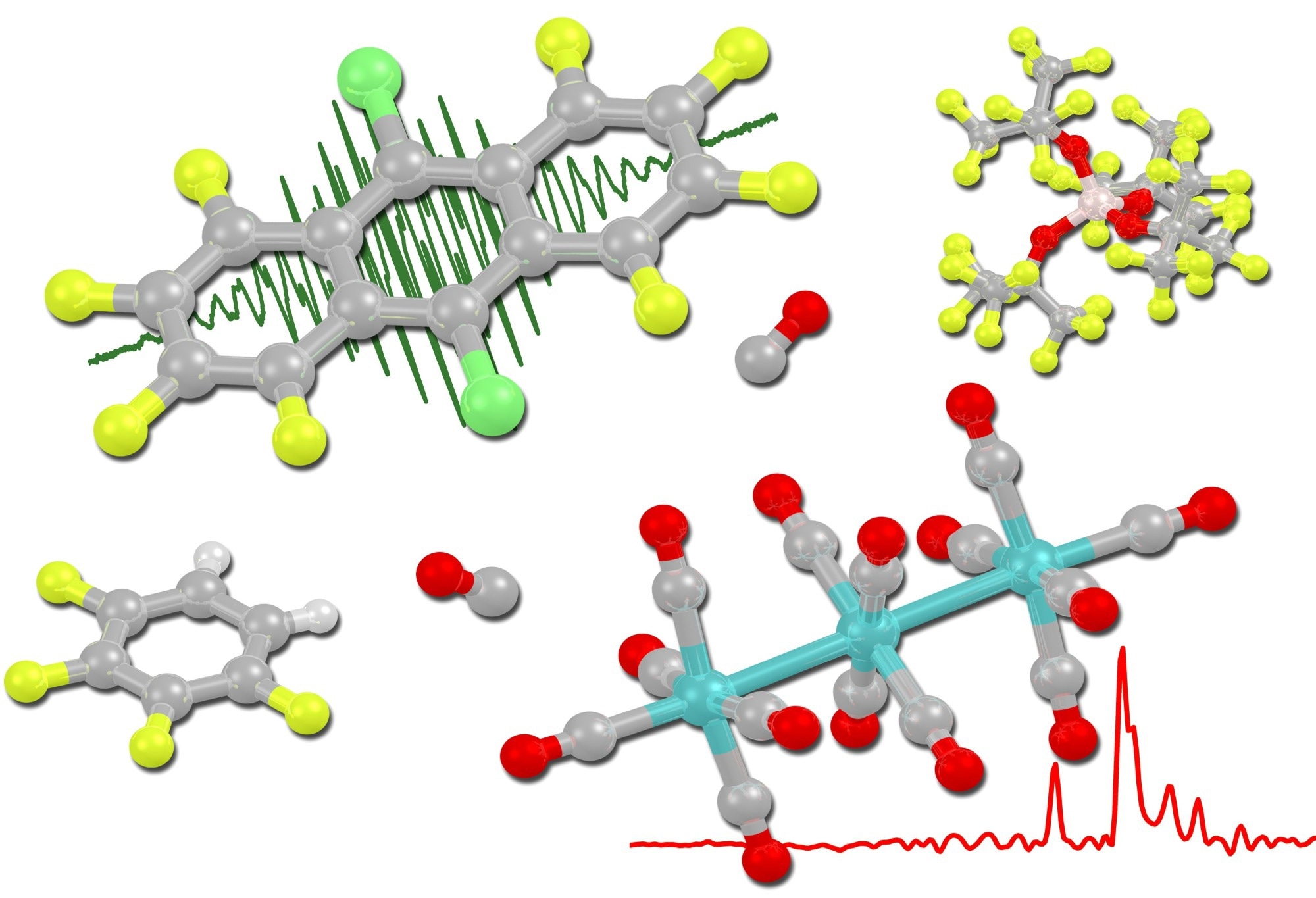Freiburg chemists have successfully converted polynuclear transition metal carbonyls into their homoleptic complex cations using common inorganic oxidants.
 Perhaloanthracene radical cations de-electronize trimetal dodecacarbonyls under carbon monoxide pressure to form the first clustered transition metal cations. Image Credit: research group
Perhaloanthracene radical cations de-electronize trimetal dodecacarbonyls under carbon monoxide pressure to form the first clustered transition metal cations. Image Credit: research group
The research group of Malte Sellin, Christian Friedmann, and Professor Dr. Ingo Krossing from the Institute of Inorganic and Analytical Chemistry, as well as Maximilian Mayländer and Sabine Richert from the Institute of Physical Chemistry at the University of Freiburg, were included in the study.
The study demonstrates that a nitrosonium salt can transform an anthracene derivative with a half-step possibility of 1.42 Volts against Fc0/+ to the radical de-electronating salt.
We have thus pushed the frontier of fundamental research in coordination chemistry as well as in organometallic chemistry a bit further.
Dr. Ingo Krossing, Professor, Institute of Inorganic and Analytical Chemistry, University of Freiburg
The research team reported their findings in the journal Chemical Science.
De-Electronator Made From Commercial Chemical
Chemists at the University of Freiburg have been looking for a way to ionize substrates without triggering undesired side reactions in order to gain access to the hitherto almost unknown class of clustered transition metal carbonyl cations.
During ionization, a neutral molecule loses one or more electrons. Consequently, a positively charged molecule known as a cation is established. A so-called innocent de-electronator is an ionizing agent that only accepts electrons from the substrate and exhibits no other unpleasant reactivities.
Since the only innocent de-electronator known to date, a perfluorinated ammoniumyl cation, requires laborious and time-consuming synthesis, the Freiburg researchers devised a substitute that is produced directly from a commonly produced chemical: A nitrosonium salt can transform the anthracene derivative, which has a half-step possibility of 1.42 volts vs. Fc0/+, to the radical de-electronator salt.
“The de-electronating salt allows us to remove electrons from the system while preserving the structure. So it’s particularly mild and creates systems that we haven’t been able to represent before. In the long term, these could help us to produce better catalysts,” Krossing explains.
The Perhalogenated Anthracene De-Electronator is Putative
To begin, the researchers attempted to synthesize the desired transition metal carbonyl cations by reacting trimetal dodecacarbonyls with a silver salt as an oxidant. The expected result was also not obtained when the trimetal dodecacarbonyls were directly reacted with nitrosyl cations.
“However, if the nitrosyl cation is reacted in advance with a perhalogenated anthracene derivative, then the resulting acene radical cation de-electronates the trimetal dodecacarbonyls under carbon monoxide atmosphere and leads to the desired salts,” Sellin explains.
Until now, no one has succeeded in converting polynuclear transition metal carbonyls into their homoleptic complex cations by typical inorganic oxidants. We have now shown that it is possible.
Dr. Ingo Krossing, Professor, Institute of Inorganic and Analytical Chemistry, University of Freiburg
Sellin further states, “Surprisingly, structural characterization as well as vibrational and nuclear magnetic resonance spectroscopies of our new cluster point to three strongly electronically different carbonyl ligands. It surprised us to see such different electronic behavior of virtually the same ligands in one molecule.”
Journal Reference:
Sellin, M., et al. (2022) Towards clustered carbonyl cations [M3 (CO) 14]2+ (M = Ru, Os): the need for innocent deelectronation. Chemical Science. doi.org/10.1039/D2SC02358J.